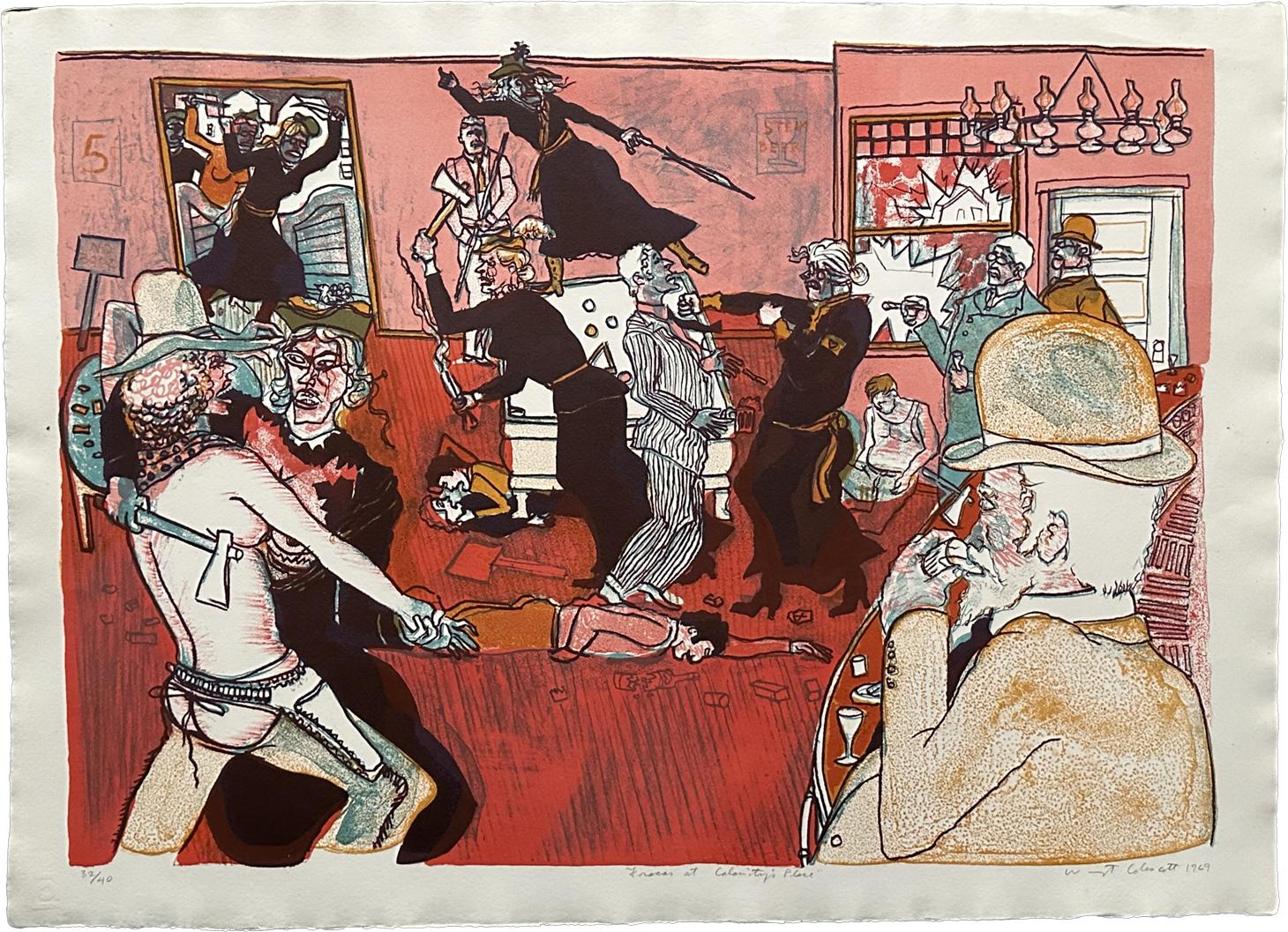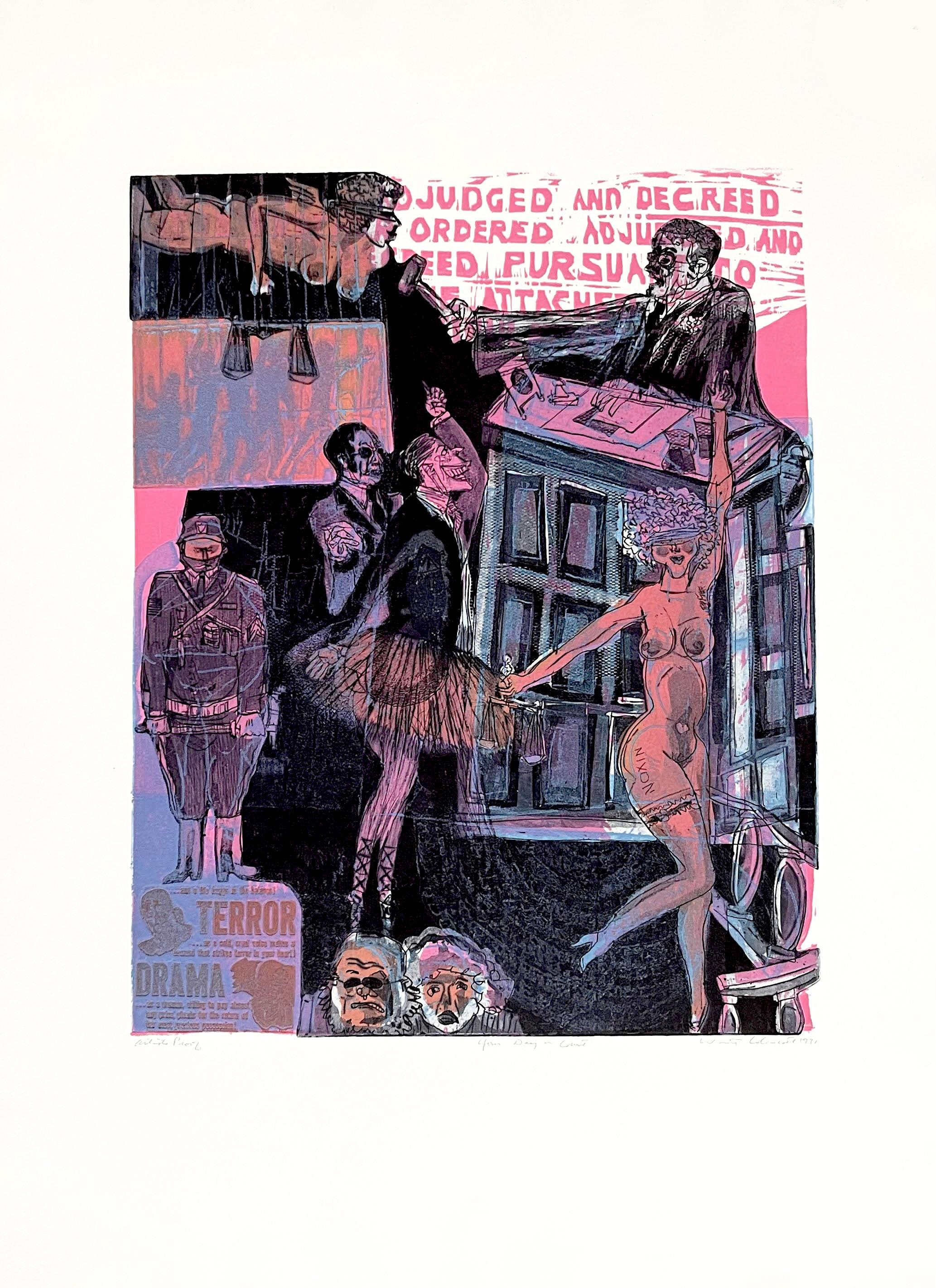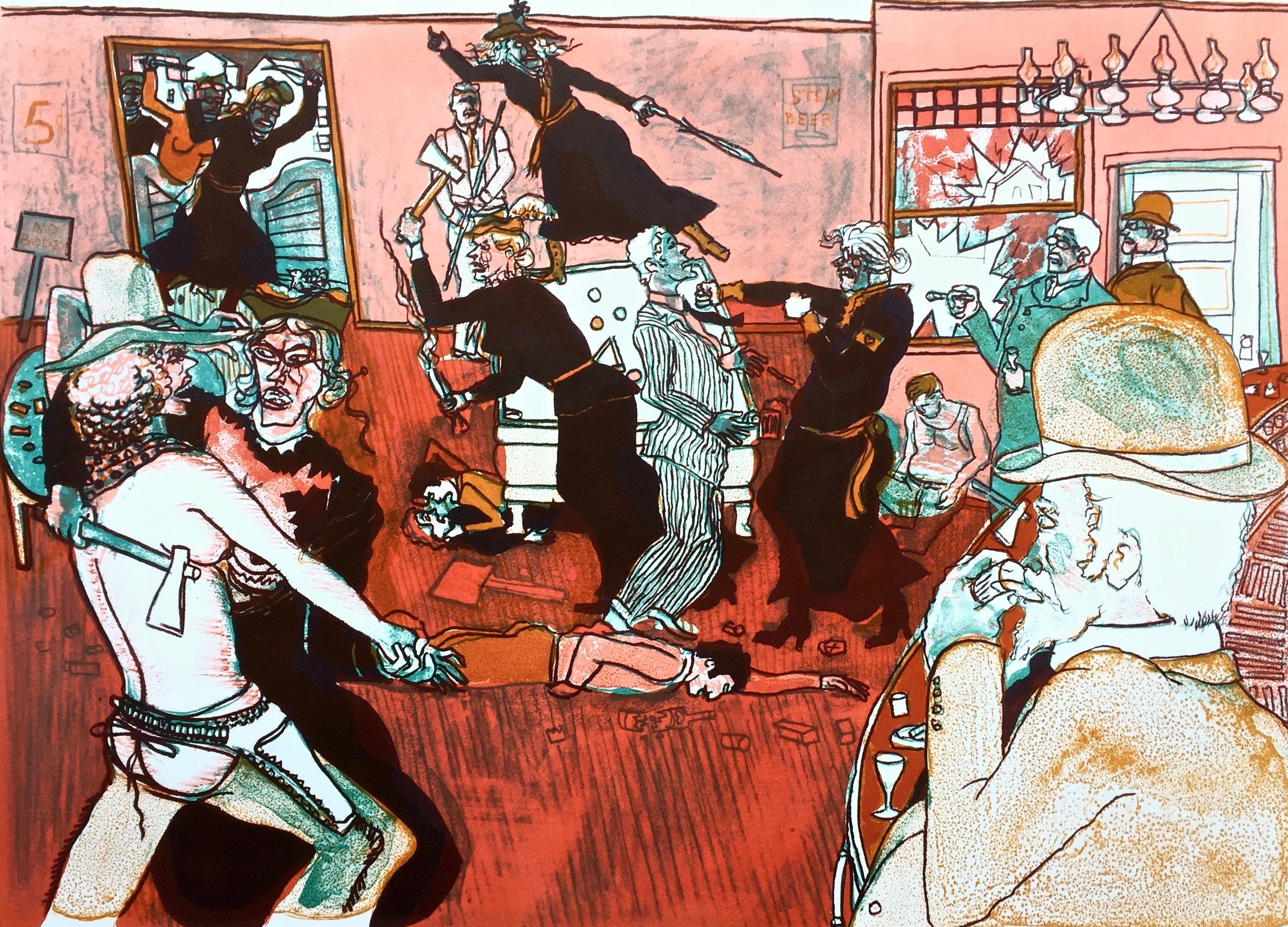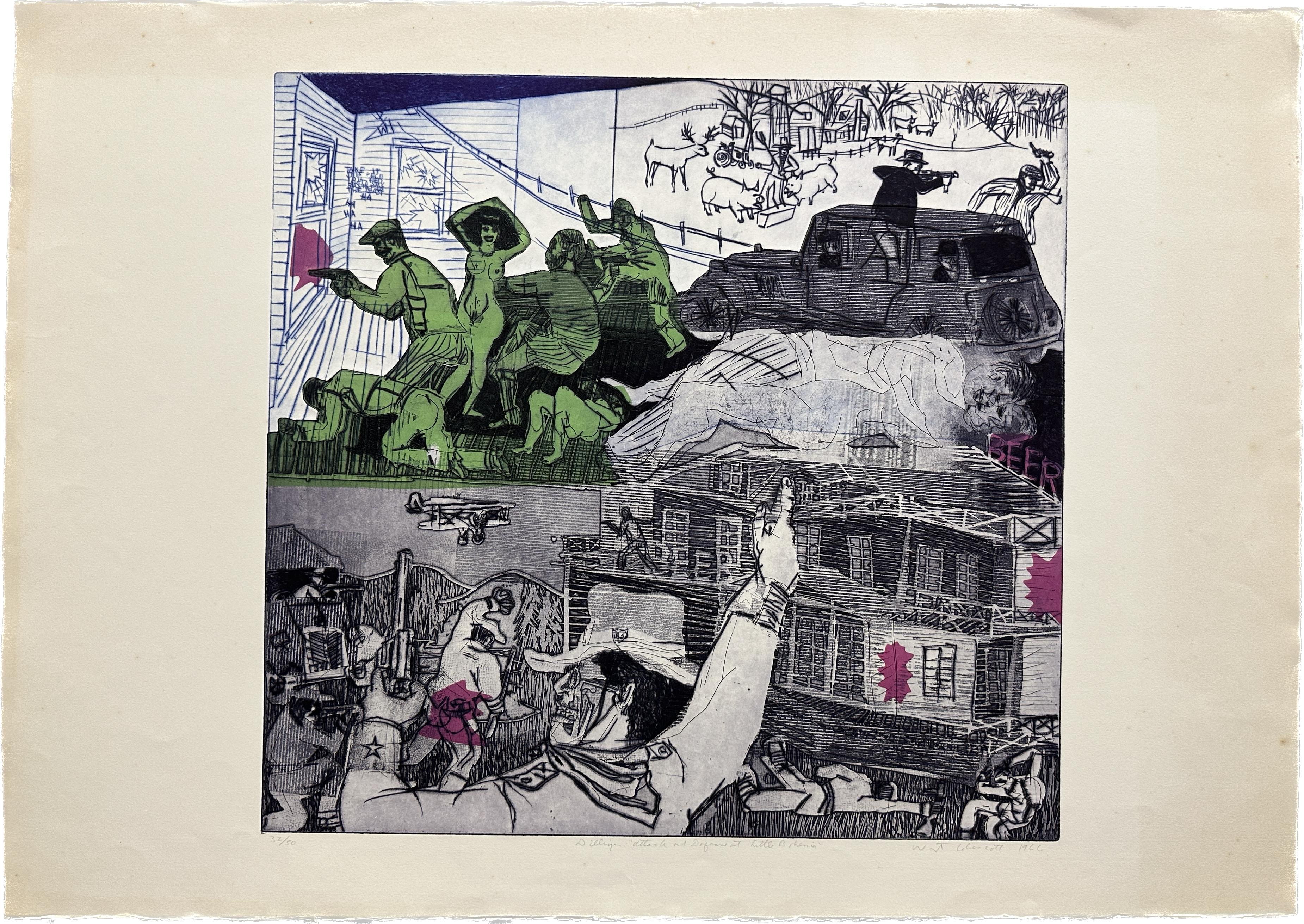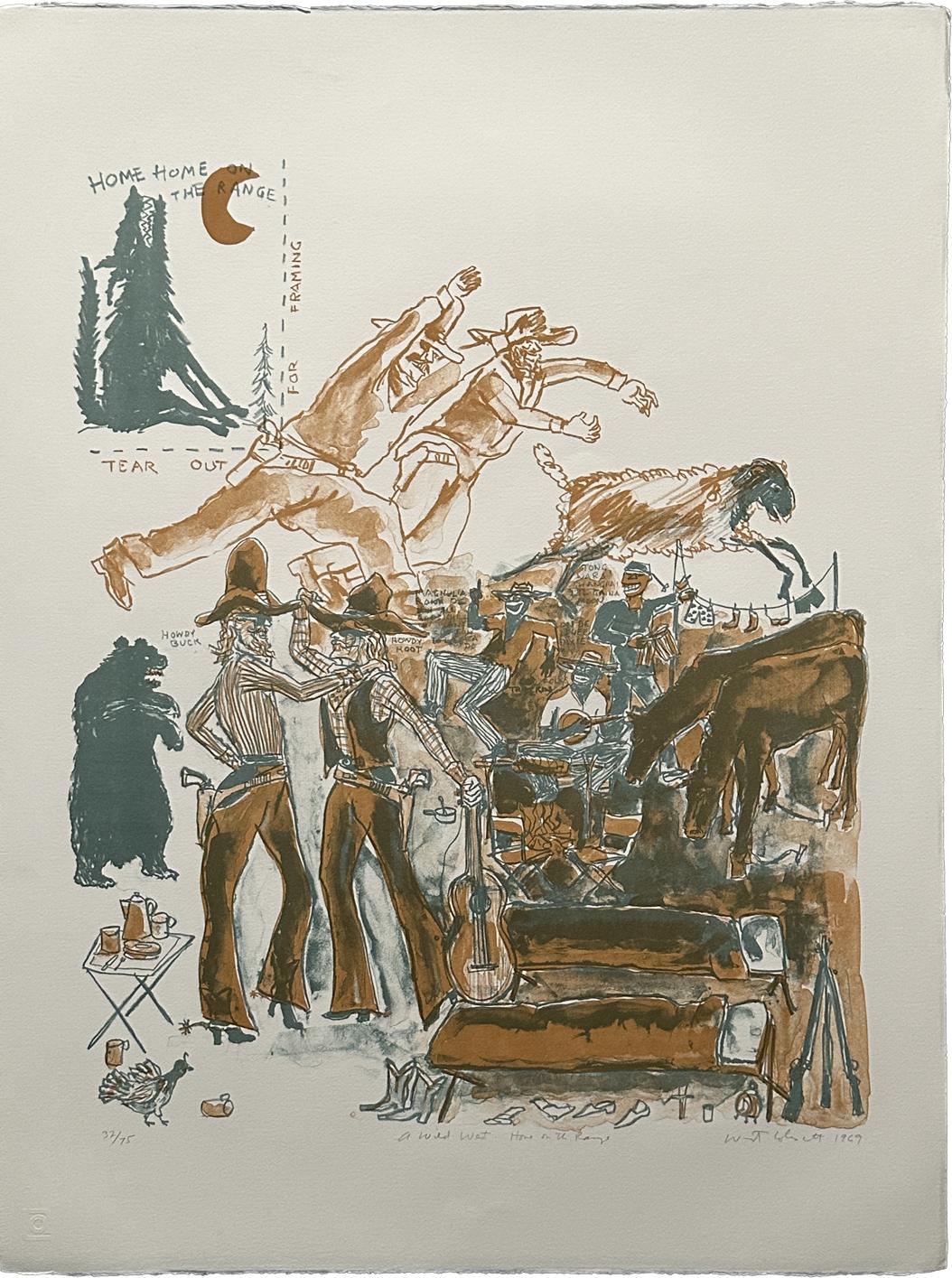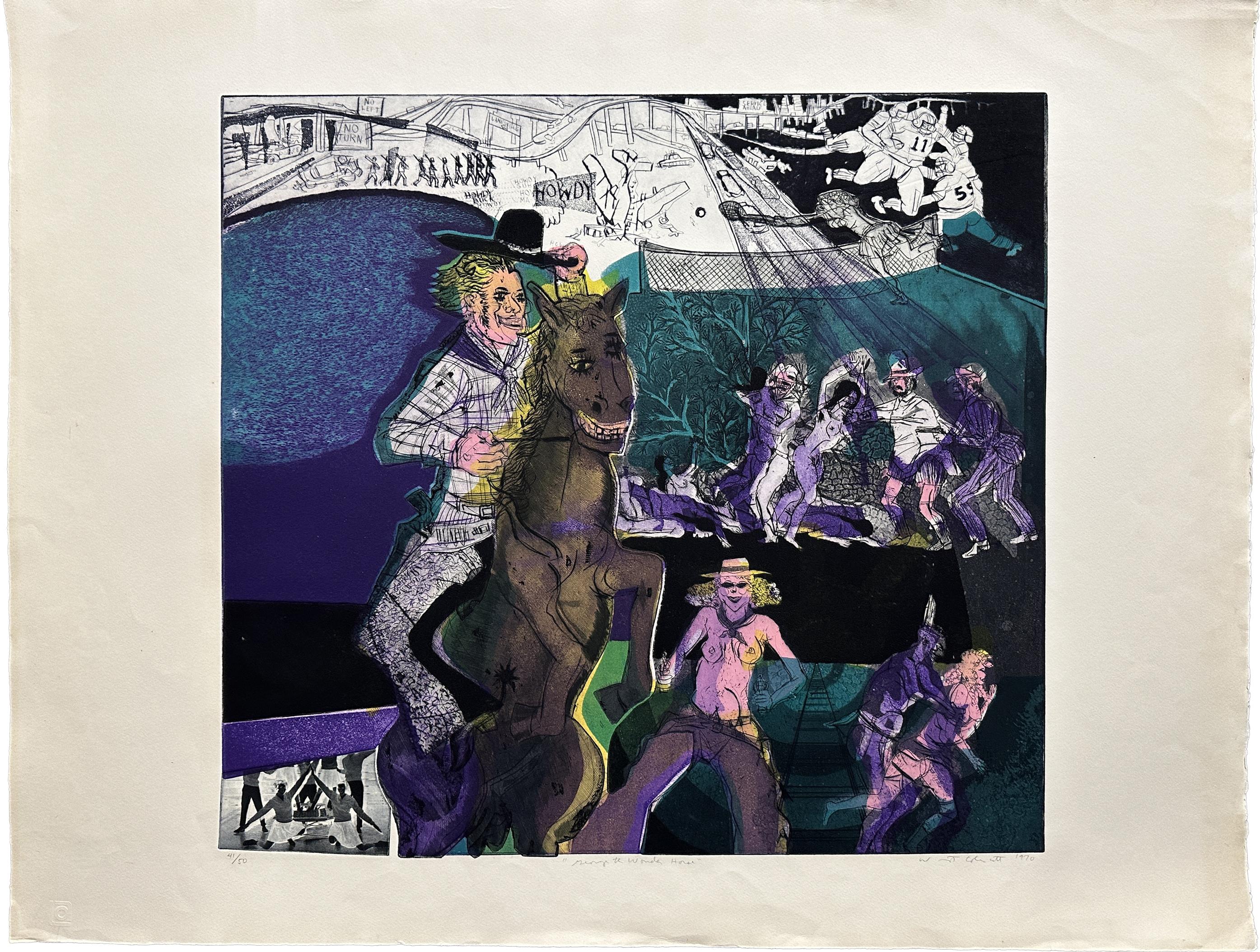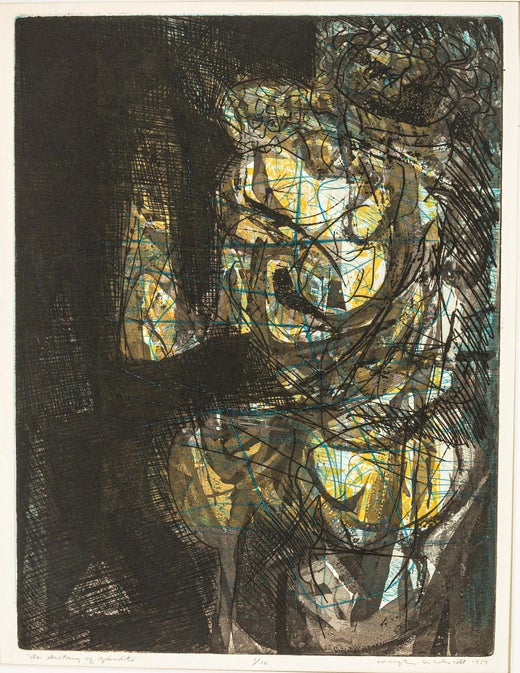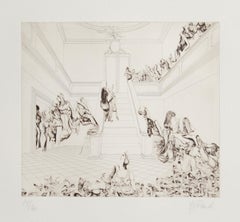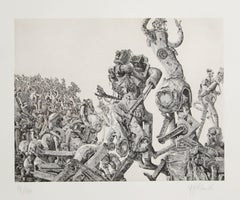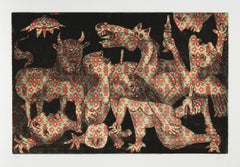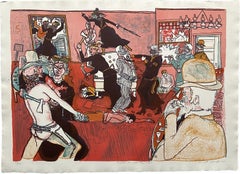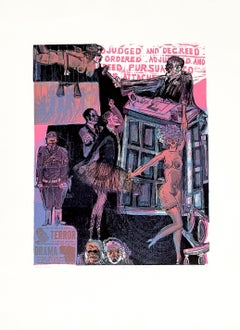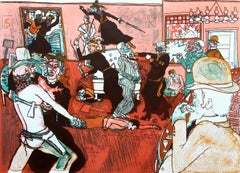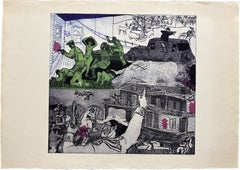Warrington ColescottYour Friends at the IRS, Aquatint Etching by Warrington Colescott1975
1975
About the Item
- Creator:Warrington Colescott (1921, American)
- Creation Year:1975
- Dimensions:Height: 15 in (38.1 cm)Width: 22 in (55.88 cm)
- Medium:
- Period:
- Framing:Framing Options Available
- Condition:
- Gallery Location:Long Island City, NY
- Reference Number:1stDibs: LU46610035702
Warrington Colescott
Warrington Colescott was an American artist best known for his satirical Etchings. Working in that area which he calls that black zone between tragedy and high comedy, where with a little pull or push one way or the other you can transmute screams into laughter, Colescott examined the society of today, its virtues and its inequities. To strengthen satire, he juxtaposed humor and violence to reinforce a comment on a current situation, he made use of historical reference.
- ShippingRetrieving quote...Shipping from: Long Island City, NY
- Return Policy
More From This Seller
View All1970s Surrealist Figurative Prints
Etching, Aquatint
1970s Surrealist Figurative Prints
Etching, Aquatint
1960s Conceptual Figurative Prints
Lithograph
1960s Cubist Animal Prints
Etching, Aquatint
1970s Surrealist Figurative Prints
Etching, Aquatint
1980s Surrealist Figurative Prints
Etching
You May Also Like
1960s Post-Modern Landscape Prints
Lithograph
1970s Modern Figurative Prints
Drypoint, Etching, Aquatint, Woodcut
1960s American Modern Landscape Prints
Lithograph
1960s American Modern Figurative Prints
Etching
1960s Figurative Prints
Lithograph
1970s Contemporary Figurative Prints
Lithograph
Read More
Romare Bearden’s Humanity Infuses His Bright, Bold Art
Through collage, painting and printmaking, the artist foregrounded Black life in America in revolutionary new ways.
Chryssa’s 1962 Neon Sculpture Was Way ahead of the Art-World Curve
By working with lettering, neon and Pop imagery, Chryssa pioneered several postmodern themes at a time when most male artists detested commercial mediums.
